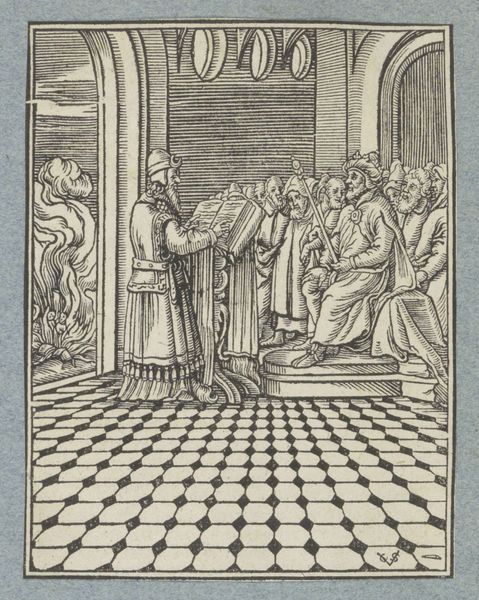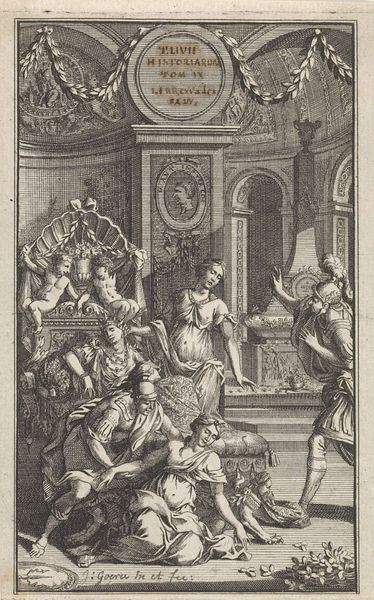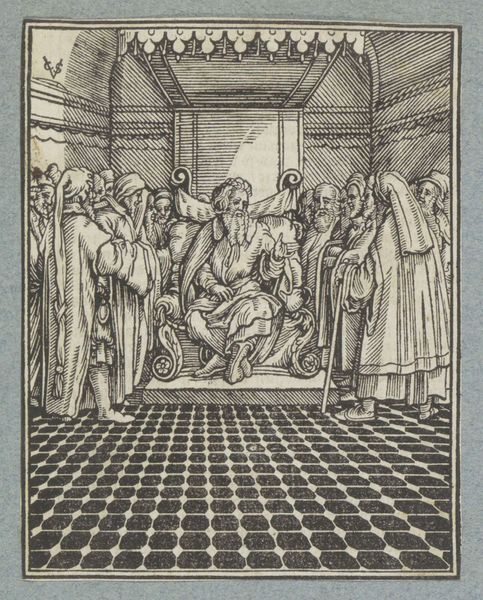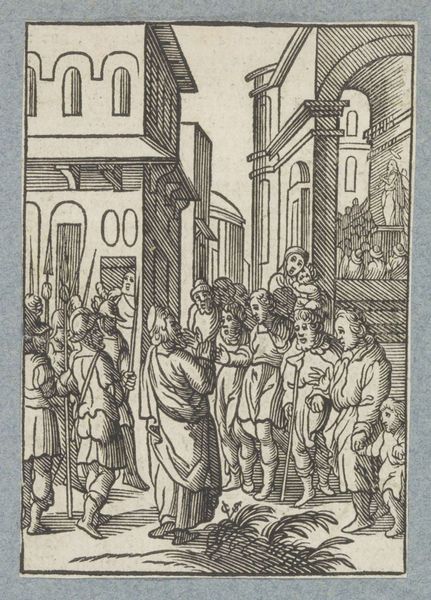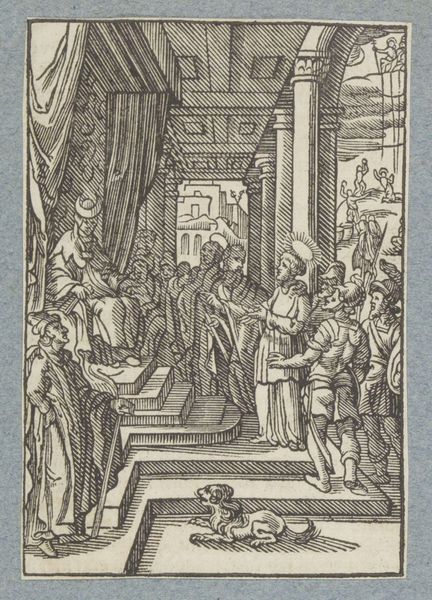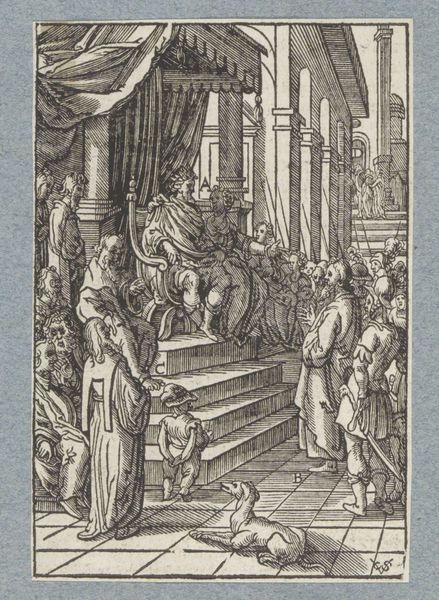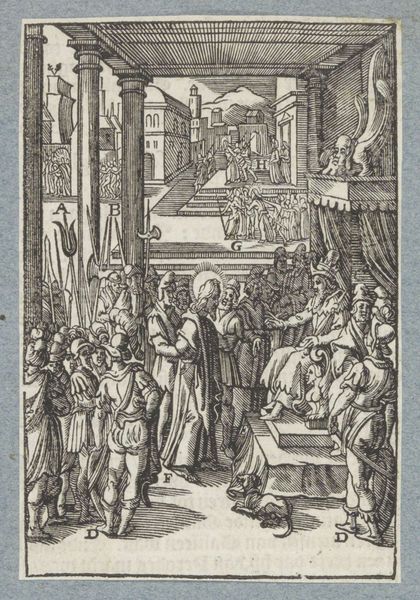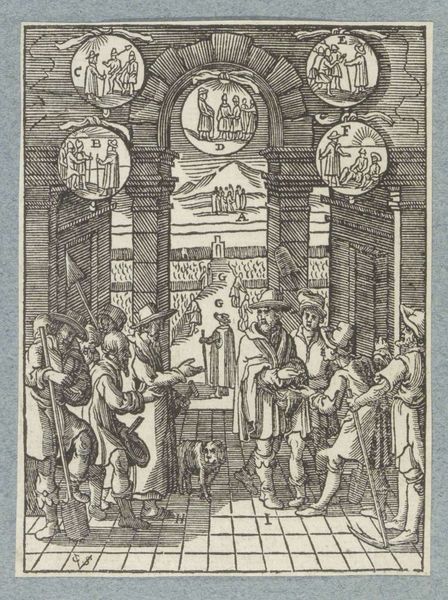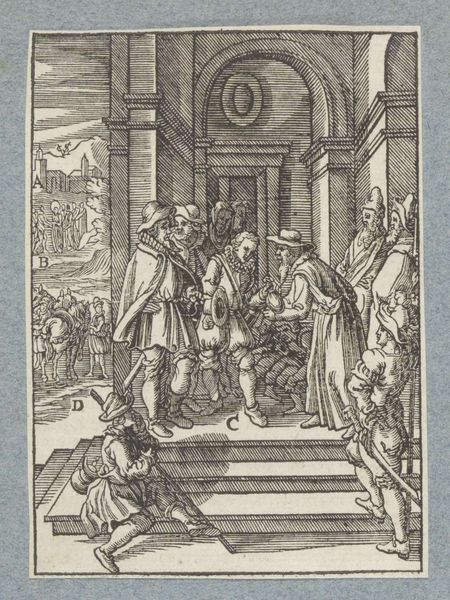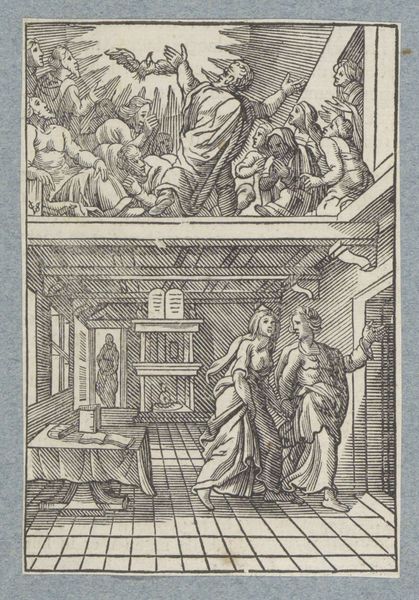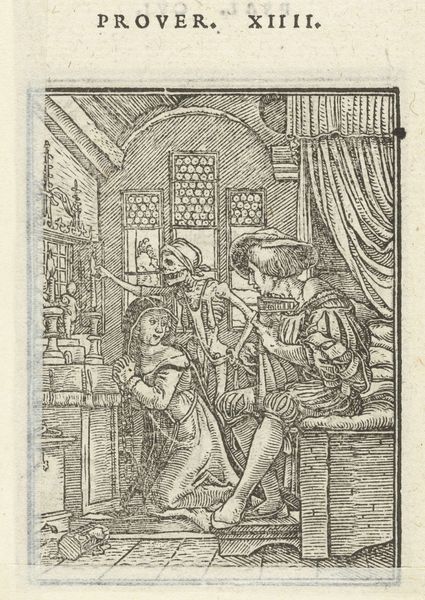
print, engraving
# print
#
figuration
#
history-painting
#
academic-art
#
engraving
Dimensions: height 110 mm, width 82 mm
Copyright: Rijks Museum: Open Domain
Curator: This is “Last Words of King David,” an engraving by Christoffel van Sichem II, dating back to around 1645-1646. It's currently held at the Rijksmuseum. Editor: My first impression is of confinement. The sharp, linear style combined with the crowded composition makes the space feel restricted, almost claustrophobic, despite the implied grandeur. Curator: Let's consider the material aspect first. It’s an engraving, meaning the image is incised into a plate, likely copper, with tools, then inked and printed. Each line is deliberately cut, requiring skillful labor. The production of prints also implies wider dissemination, broadening the reach of visual narratives and religious teachings. Editor: Absolutely, and the narrative here is key. Van Sichem situates this print within the wider, patriarchal tradition of biblical history. We are witnessing a king, presumably at the end of his life, likely bestowing wisdom or commandments to his court. It plays into notions of divinely ordained power structures, where lineage and obedience were paramount. Curator: The sharp lines and stark contrasts were achievable because of the tools van Sichem chose; such an elaborate crosshatching adds depth and tonality. Also the medium’s relative affordability allowed wider consumption across various social strata. This facilitates and possibly perpetuates those power structures you mentioned. Editor: It raises questions, doesn’t it? Who was this artwork made *for*, what stories does it perpetuate about gender roles or power structures and does it critique or support it? David, in many interpretations, is giving instruction; the work therefore becomes another way to ensure his message lived on long after him. Curator: Exactly. Consider how the original print was probably one of many, contributing to the mass reproduction of images. This makes it necessary to consider production alongside the cultural messages it conveys. Editor: Analyzing it through those lenses lets us reveal power dynamics and socio-political context. Art historical discourse, feminist theory and critical race studies help us see beyond the literal narrative to unveil complex questions surrounding cultural hegemony, and the lasting influence of traditional values, so powerfully, yet so simply presented in this 17th-century print. Curator: It's truly fascinating how much we can learn by examining both the technique and social context, of a relatively simple piece such as this engraving. Editor: Indeed. By digging deeper, we gain valuable insight into how art both reflects and actively shapes societal narratives throughout history.
Comments
No comments
Be the first to comment and join the conversation on the ultimate creative platform.

